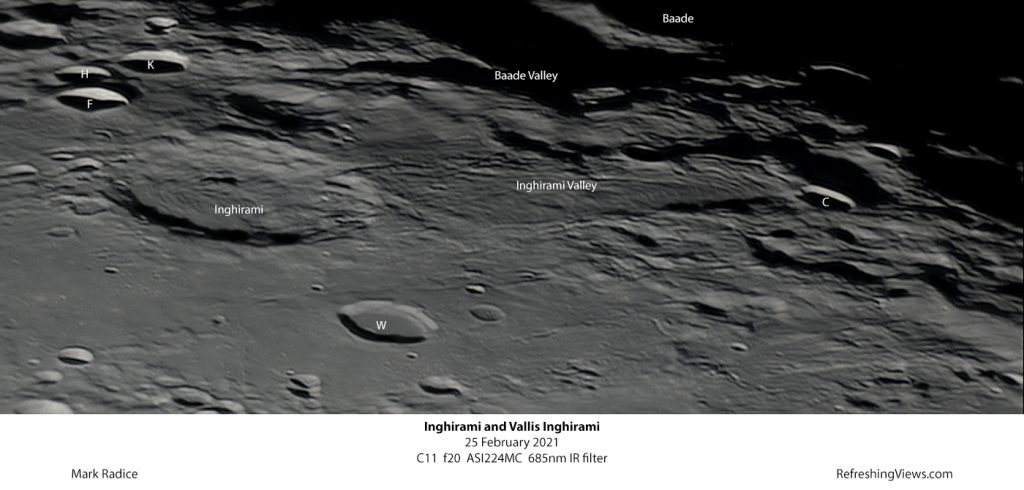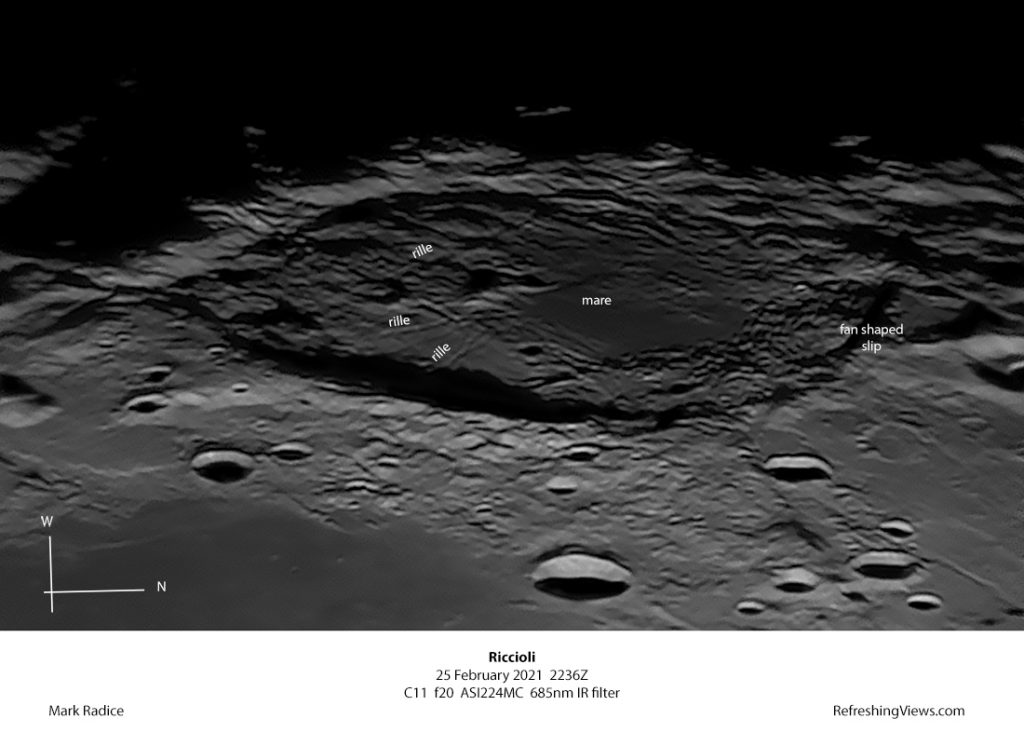25 February 2021: Gibbous Moon
Cold but calm, no wind and beautifully clear. A bright moon, nearing full, is lighting up the frosting grass. Examination through the eyepiece reveals a favourable libration is bringing seldom-seen features to the fore.
Inghirami
Inghirami (91km) is a new crater to me as previous observations have been constrained by phase and libration. Tonight it makes a fine show with the unusual Vallis Inghirami alongside.
The crater and vallis appear as if they have been subject to a mudslide. Reading online reveals that this surface was formed by the molten ejecta from the formation of Mare Orientale. The molten ejecta blasted the Inghirami valley and splashed onto the crater floor and then solidified. What a sight that must have been.
I note that the terracing in the Vallis, reminiscent of glacial crevasses, are aligned with the gradient and flow downhill implying that they were formed in a liquid state. Secondly, the crater has been breached in two places in the north-west leading to the flow of ejecta that has covered the crater floor.
What a fascinating sight!

Riccioli Crater
Riccioli (146km) crater is on the limb of the near-full moon and therefore not often observed. It is very easy to locate as it is alongside the larger and surprisingly dark Grimaldi. It has a very unusual floor that has a number of differing surfaces. I wonder if, like Inghirami, the floor has been affected by the formation of Mare Orientale (ie filled with ejecta) and then subsequently flooded.
Of note:
- The norther region is dark, flat, lava flood mare
- The south is lighter and more complex terrain, albeit still relatively flat.
- The crater rim is not terraced, the walls appear smooth. Looking at the north eastern segment, there is a large fan-shaped section that appears to be a landslip.
- A long, straight rille runs from the southern rim to the north-west
- Two shorter rilles lie on the south eastern section of the floor.
